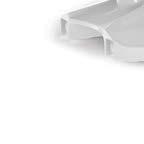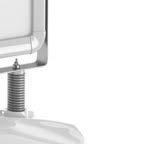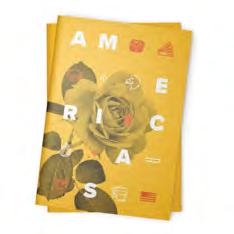LeadingPRINT
Exponential Impact
Tom Moe’s focus on profitability yields big results
For the Love of It
Zora Agheli mixes art and technology in print
Mastering the Art of Improvisation
Rick Sands takes a fresh approach, every time




Tom Moe’s focus on profitability yields big results
Zora Agheli mixes art and technology in print
Rick Sands takes a fresh approach, every time



APTech Connect is for innovators and idea generators in the print industry and those who want to be associated with them.
To participate in this virtual peer group, sign in at: community.printtechnologies.org
Setting up your profile and getting involved is easy! Participating in the discussions is just like sending and receiving email.
Join manufacturers, printers, designers, creatives and all who have a connection to print.



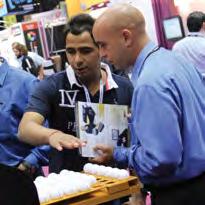
Publisher Julie Shaffer
Editor Beth
Renaud
Design Amazingly Creative, Inc.
LeadingPRINT magazine is published four times per year by the Association for PRINT Technologies.
Association for PRINT Technologies 1896 Preston White Drive Reston, Virginia 20191 (703) 264-7200
Find us online printtechnologies.org twitter.com/APT_tech facebook.com/APTtechorg linkedin.com/company/ association-for-print-technologies
LeadingPRINT magazine is a benefit of belonging to the Association for PRINT Technologies. To learn how to become a member, contact Pernilla Jonsson at pjonsson@aptech.org.
Send feedback and story ideas to jshaffer@aptech.org.
Please recycle this magazine.
All rights reserved © 2019 Association for PRINT Technologies

In a world where “the cost of being wrong is less than the cost of doing nothing” (wise words from Seth Godin), businesses have been conditioned to move boldly and quickly. Sweeping transformation is rewarded; disrupt or be disrupted has been the rallying cry. Incremental change has been eschewed. But let’s face it, a company can make only so many big changes at one time. While we’re working on large-scale transformation, we have daily businesses to run, cultures to nurture, and customers to serve. There’s a limit to our bandwidth for big change.
Or is there? …
What happens when you make transformation an everyday event? Zappos executives famously encouraged employees by reasoning that 1-percent daily improvement makes you 37 times better after one year. What would happen if you challenged yourself, and your company, to be a fraction better in your execution from one day, week, month, quarter to the next? What is the mass effect of small steps, taken in increments but accrued over time?
The company leaders featured in this issue remind us. When done with intention, the impact can be big. True entrepreneurs are always tinkering and elevating the game, whether it’s by improving profitability 1 percent at a time, like Tom Moe; staying on the bleeding edge of technology, like Zora Agheli; or bringing a spirit of innovation and fresh thinking to each and every job, like Rick Sands.
So while you need to keep your sights set on major transformation, yes, don’t forget that nickels turn into dimes, and dimes into dollars.

By Tom Moe
By Zora Agheli
By Rick Sands

Mark J. Nuzzaco, Esq. is a freelance contributor with advocacy experience in the printing industry.
Tom Moe is president and chief executive officer at Daily Printing.
Zora Agheli is owner and chief executive officer at Rush Graphics.
Rick Sands is president at Fenway Group.

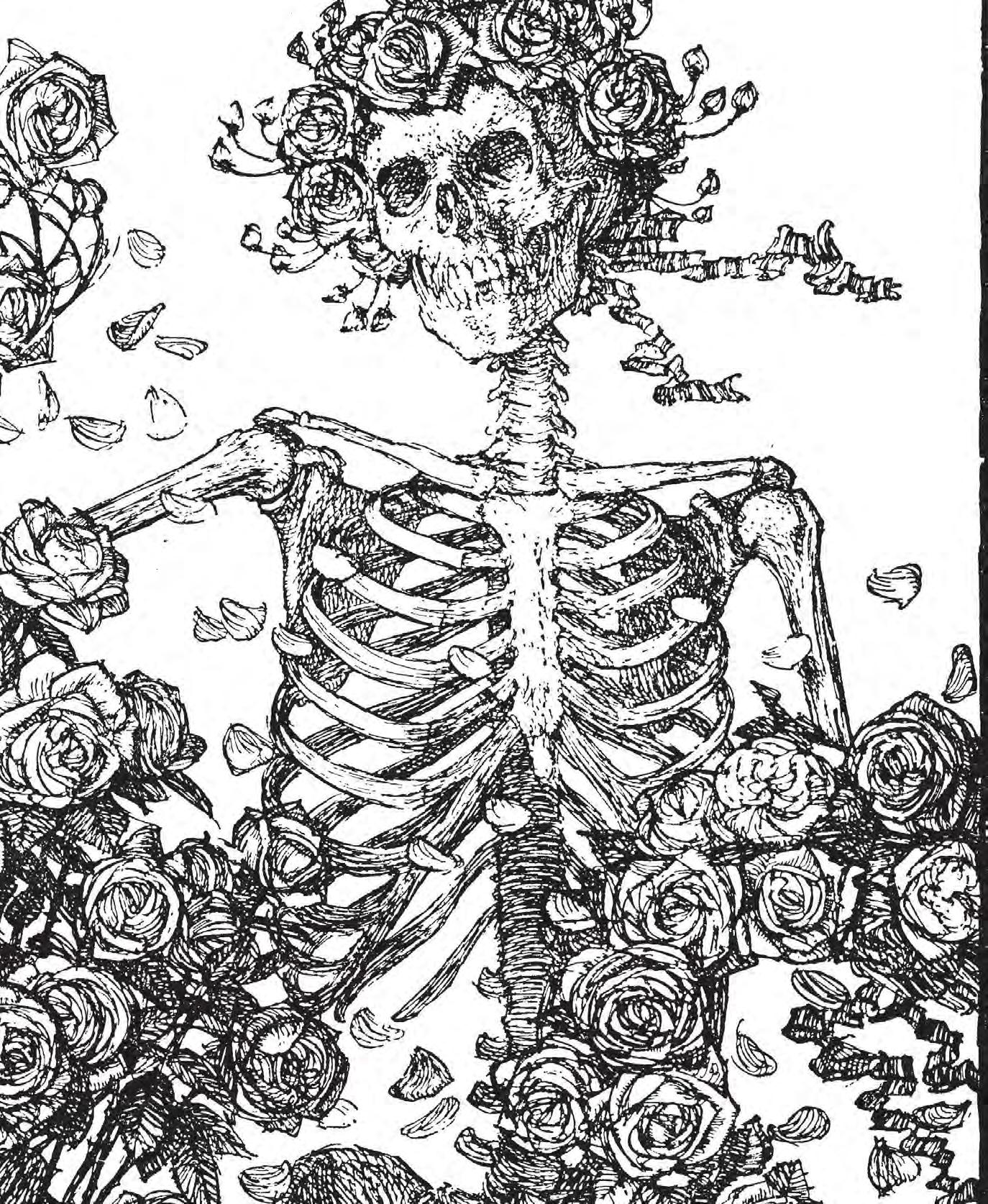
The initial print run for J.K. Rowling’s “Harry Potter and the Deathly Hallows” is the largest in history, at 12 million copies.

It’s clear from the moment you pick up “Designing for Print” that the book was a labor of love for author Marina Poropat Joyce. In its carefully-crafted pages, this 25-year veteran graphic designer shares her deep knowledge of how to properly create printed projects — a topic not always taught in today’s digitalcentric design programs.
Joyce’s book may be helping to change that. Since its publication in 2018, “Designing for Print” has found its way into 20 university design programs, in some cases resurrecting print design classes that had been cancelled because there were no current textbooks available on the subject. The book
itself showcases many printing techniques. It’s printed on eight different paper stocks (offset and digital) using eight ink colors, with examples of special techniques such as digital UV and foil printing. Joyce includes explanations of print production processes and workflow, cost comparisons for different printing methods, an extensive glossary of up-to-date terms, and helpful checklists for proofing and press checks. LeadingPRINT readers can purchase this book at a $20 discount. Visit tinyurl.com/ JoyceDesigningForPrint and add the book to the shopping cart. The price will be reduced automatically after you select “Checkout.”
Few organizations work as tirelessly for the benefit of the graphic communications industry than the Ghent Workgroup (GWG.) It was founded in Ghent, Belgium, in 2002 to help build consensus for PDF creation and preflight. The group of global experts has since expanded and evolved and is now dedicated to creating international specifications and building best practice workflow management and learning tools, which are free to the industry worldwide. gwg.org

According to the Coalition for a 21st Century Postal Service, 7.5 million jobs in the United States rely on the mailing industry. As a print service provider, odds are that a fair portion of your business relies on it, too. If you’re interesting in joining the Coalition in its mission to ensure that the nation continues to enjoy a financially sound and efficient postal system, visit 21stcenturypostal.org.
Have you ever provided a credit card number to access a “free trial” only to realize you forgot to cancel it and ended up paying for a service you didn’t really want? The iOS app DoNotPay lets you sign up for free trials by providing a valid faux name, address, and credit card on your behalf. And it cancels the trial on time, too. tinyurl. com/AppDoNotPay


Traditionally, printing companies have not been creators of new products, but that’s changing. More printers are developing innovative products to meet the evolving needs of their clients, and this requires knowing how to bring these products to market, including via the internet. This book can help.
Jeff Walker is considered the godfather of the online product launch. After growing a modest online investment advice gig into a multi-million dollar enterprise, he has been teaching his method to other entrepreneurs. In “Launch: An Internet Millionaire’s Secret Formula to Sell Almost Anything Online, Build a Business You Love, and Live the Life of Your Dreams,” Walker shares a step-by-step tutorial for his Product Launch Formula, along with stories of other entrepreneurs who have enjoyed extraordinary success using it.
The Product Launch Formula has four main stages:
• Pre-Prelaunch – build anticipation, evaluate customer receptivity, and identify potential objections to your offer.
• Prelaunch – continue driving interest by releasing three pieces of high-value content that engage mental triggers, based on neuroscience, to influence decision-making.
• Launch – build a sense of scarcity with a limited-time offer that typically lasts only 24 hours to seven days.
• Post-Launch – stay connected via follow-up with new customers and those targeted who did not buy. The book does include some self-promotion (much of Walker’s business comes from selling educational courses), but the meat of it contains a blueprint for how to successfully launch a new product or business. tinyurl.com/WalkerLaunch
Spend more than 15 minutes in a group of print company executives, and you are likely to hear the discussion turn to how difficult it is to find new employees. As long-time production workers head toward retirement and fewer schools offer graphic communication programs, finding, recruiting, and retaining talent is a top concern for almost everyone.
Recognizing this, a group of concerned industry representatives formed the Graphic Communications Workforce Coalition with the purpose of building awareness, promoting recruitment of new people, providing apprenticeships and training programs, and retaining existing personnel in the industry. The coalition is open to individuals representing associations, educational institutions, vendors, and print service providers. To date, over 36 organizations have joined, but the group seeks more representation from the server provider community. By joining, you will help shape programs to attract and train the next generation workforce for our industry. There is no cost to join. Visit app.donorview.com/kwMW to apply for membership, or contact John Berthelsen at jberthelsen@printing.org
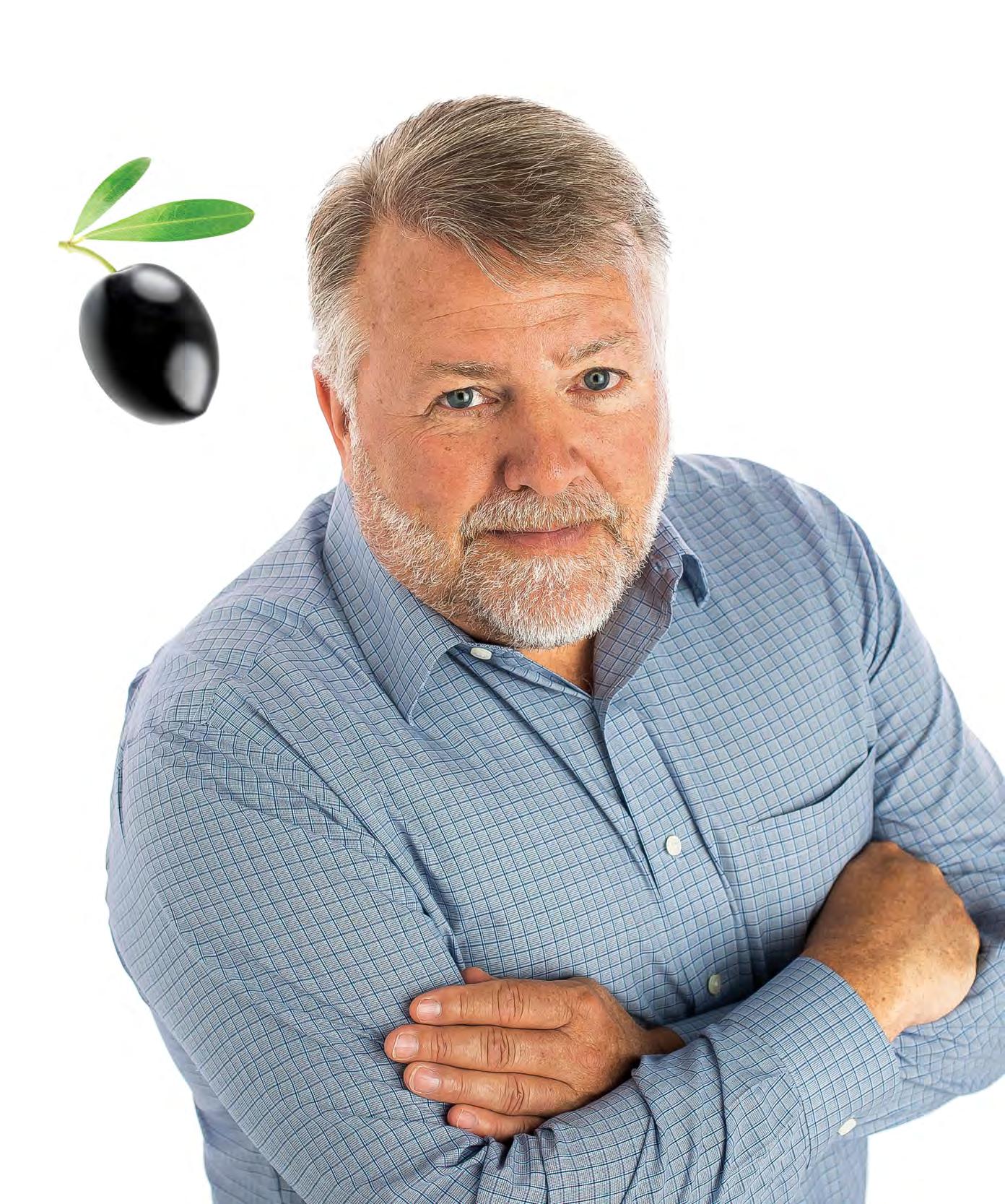
It's a big deal!

Photos by Monda Goette
By Tom Moe
Ionce heard a story that profoundly impacted how I think about managing costs, whether for a printing company like ours or any other type of business. American Airlines was looking for ways to cut costs in the 1980s, and the top executive posed this question: “How much money could we save if we removed one olive from every dinner salad served to passengers?” The answer was about $40,000 per year.
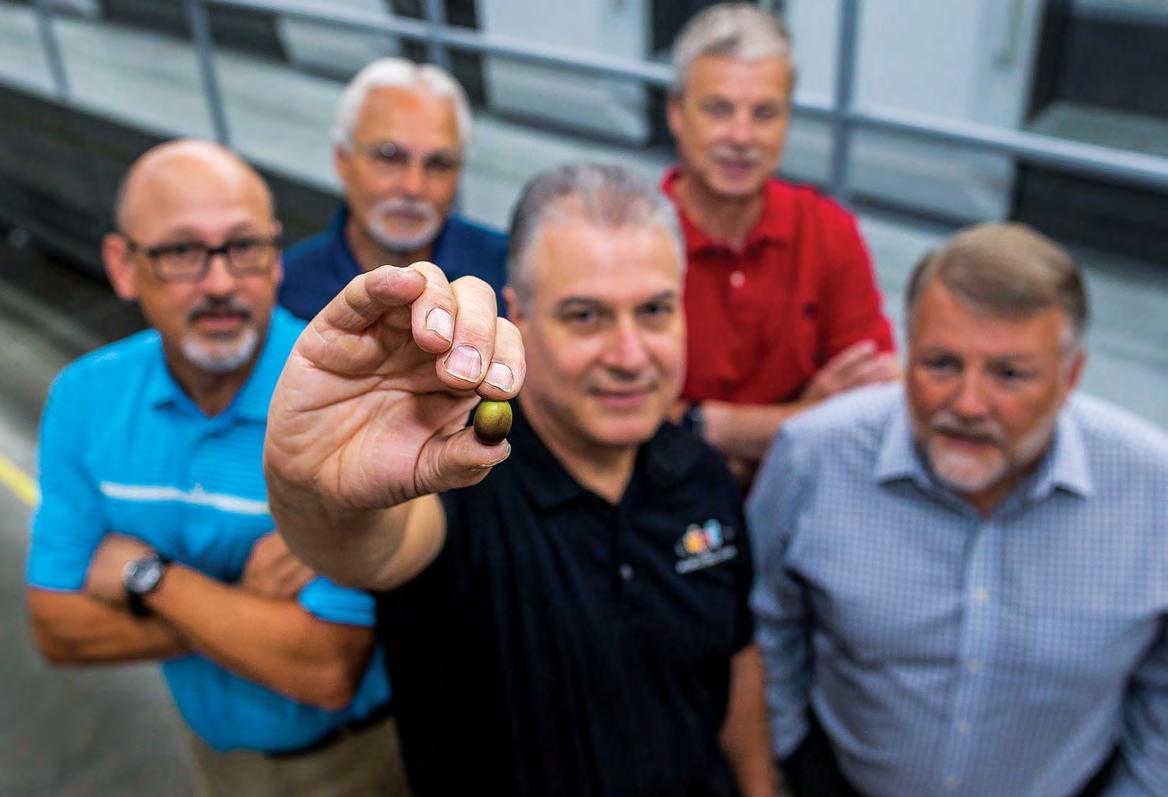
You might wonder how one olive could make such a difference, but it’s not just a single olive. It’s one olive per salad, multiplied by all of the salads served by American Airlines in the course of an entire year.
Although this story has been around for over 30 years, the lesson continues to influence many CEOs today, including me. The lesson is not to ignore the little things. Over time, little efficiencies accumulate into big efficiencies, and small cost savings multiply into large ones.
This “olive” lesson has been particularly impactful for us here at Daily Printing. We are a $12-$15 million commercial printer in Plymouth, Minnesota, that offers digital and offset printing, marketing and graphic design, mailing services, and warehousing and fulfillment. But unlike most companies, we don’t have a single owner. We have 70 of them. Daily Printing is 100-percent employee owned. As the president and CEO, I have a responsibility
to make the business profitable for them.
From this perspective, growing our sales while breaking even wasn’t good enough. We had to change our strategy to achieve true profitability. To do this, we developed a three-pronged approach:
1. Cut loose unprofitable customers.
2. Create a meaningful differentiation strategy.
3. Reduce costs through a ruthless elimination of inefficiency (or, olives).
We have 800 competitors in our “local” marketplace. When I look out the window from my office, a competitor sits 100 feet away. Halfway down my block is another one. Over my right shoulder is another. Surrounded by so much competition, we are not going to win this battle on price. Nor do we want to. As a profit-driven company, we want to be driven by margins and value.
So how have we gone from breakeven to profitable? It started by charging our customers what our services are worth. Daily Printing has always been customer-centric, and we could not continue to offer the best service, the best production quality, and an outstanding range of high-end ser vices at
“My responsibility is to make money for the owners of this company. It’s more important to be a $15 million printer with 4- to 5-percent profitability than a $25 million printer breaking even.”
cut-rate prices. We had to increase our margins.
But first, we had to know which of our customers were profitable and which weren’t. When we took a hard look at our costs — a really honest look — we were surprised. We weren’t making a profit with some of our customers, even our largest ones. Maybe their turnaround times didn’t make sense. Maybe there wasn’t enough margin. Whatever the reason, we were barely breaking even, and in some cases, were losing money. It was time to have some difficult conversations. We had to help our unprofitable customers understand that we are a business just like they are. If we don’t make money, we don’t stay in business. We had to raise our prices. These conversations weren’t easy, but they were necessary. And three things resulted:
• A portion of our customers took the leap of faith with us.
• A portion chose to take their business elsewhere.
• A portion left, and then after working with other printers, realized our value and came back.
During this process, we had to say goodbye to some large accounts and one of our salespeople. However, Daily Printing is now in a much better financial position. Although our revenues overall are down, we’ve gone from breakeven to profitable.

Will we rebuild our revenues to where they were?
That is the goal, but if we don’t, we are okay with that. My responsibility is to make money for the owners of this company. It’s more important to be a $15 million printer with 4- to 5-percent profitability than a $25 million printer breaking even.
Becoming profitable has required us to do more than change our prices. We have had to change the way our customers think about us. They have to see us as a premium partner worth a premium price.
One of the ways we’ve done this is by starting a robust content marketing program. This is an opportunity for us to demonstrate that we understand the challenges our customers face and that we’re committed to providing them with resources to help solve those challenges — or simply, to help them be better at what they do.
Our program includes a magazine, called Connect Daily, and live educational programming. Connect Daily is about print, but in the bigger picture, it’s a magazine focused on marketing — intended to help our customers market themselves more effectively. It’s written by the professional writers at Conduit, a publisher of niche magazines to the trade. We publish seven times per year, in print and digitally. Once each year, we have a special issue focused exclusively on print.
We supplement the magazine with an annual, half-day educational event. Based on the feedback we receive from readers about what resonates most with them in the magazine throughout the preceding year, we identify topics and develop a theme for each event. The programming starts with lunch, includes a keynote and breakout sessions, and ends with happy hour. (One of our recent keynote speakers was Dr. Colby Jubenville, co-author of
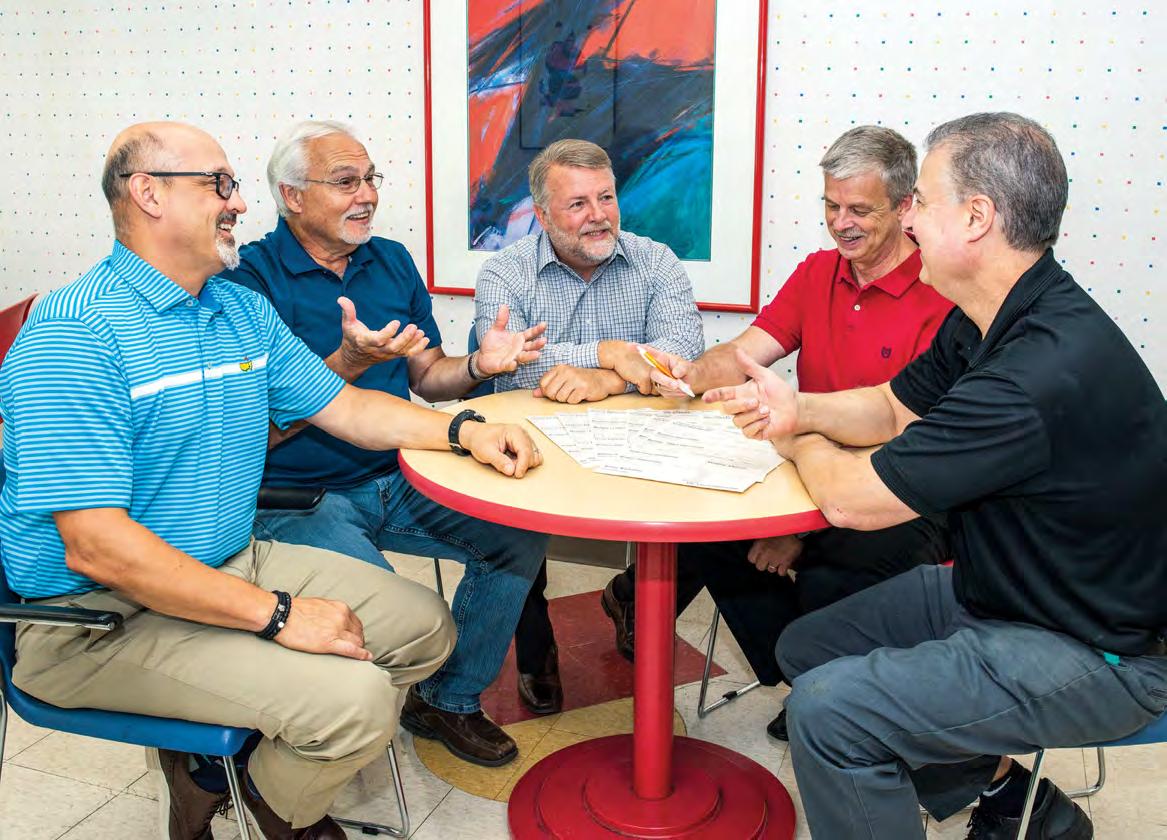
“Zebras and Cheetahs: Look Different and Stay Agile to Survive the Business Jungle” and “Me: How to Sell Who You Are, What You Do, and Why You Matter to the World.”) For the breakout sessions, we invite supporting speakers, such as local vendors, or customers who are implementing ideas covered in the keynote. One of my favorite sessions was built off of a magazine article about micro-branding. This was right around the time craft brewing was starting to take off, so in the live event we featured several local micro-breweries and how they’re effectively competing against their larger competitors.
Thompson Reuters, well-known legal publisher, spoke at our first educational event about how they were using big data to drive mail programs. They were producing a personalized direct mail piece for attorneys around the country and varying the text
and photos based on each attorney’s type of practice and the continuing education credits they needed to maintain their license. Not only did educating our clients about personalized, data-driven mailings help them achieve better results, but it helped us drive more print revenues when they came to us for the related services.
After four years of offering content marketing, I can say without a doubt that it has changed how our customers see us. Not only has it allowed us to compete without having to be the lowest price, but it has helped us to retain customers, which of course has a direct impact on profitability. According to Bain & Company, a 5-percent increase in customer retention can increase a company’s profitability by 75 percent. According to Emmet Murphy & Mark Murphy (“Leading on the Edge of Chaos”), a 2-percent increase in customer retention has the same effect as decreasing costs by 10 percent.
Improving profitability has required improving our cost-efficiencies. We
“To get the answers, I assembled a team that included five employees wh, together, represented the functional areas of our business. We had a pressman, a salesman, a production manager, the vice president of production, and me. Each of us brought a critical perspective to help the team identify and solve inefficiencies — and to consider new opportunities ”
have analyzed every aspect of our business, including administration and production, to eliminate waste and become more efficient. We have had to ask hard questions and bring together cross-functional teams in order to uncover these opportunities.
This has demanded a real cultural change. As in many companies, decisions at Daily Printing were made in silos historically. Production made production decisions. Sales made sales decisions. Finance made financial decisions. There was some cross-team discussion, but there wasn’t a strategic emphasis on cross-functional collaboration.
Our first effort at this type of collaboration was in early 2018 when we decided to look at the efficiency of our production workflow. Our presses were still producing great work, and we had an excellent relationship with our existing vendor, who was handling everything from production equipment to software. But we wanted to know: Was there something we were missing? Was there a different solution out there that would make us more efficient? It was worth asking the questions.
To get the answers, I assembled a team that included five employees who, together, represented the functional areas of our business. We had a pressman, a salesman, a production manager, the vice president of production, and me. Each of us brought a critical perspective to help the team identify and solve inefficiencies — and to consider new opportunities. Even though this process revolved around production, for example, I wanted a salesman on the team to help us identify hurdles to new sales and understand whether new equipment could open doors to opportunities.
When we first started out, the biggest challenge was bandwidth. This process took five of our top people away from their primary jobs for hours, sometimes days, at a time. We traveled around the country, visiting client sites and talking to press operators and, sometimes, end clients. This required huge sacrifices from the team, but it was important that all of us be committed to the process.
The other challenge was helping everyone on the team understand that they were on a level playing field. Everyone put in the same amount of work, and everyone had the same vote. No one person, whether that
was the CEO or the salesperson, could exert more influence than another. This took some diplomacy to work out, but as a management team, we learned a lot. The salesperson would say, “We’ve been locked out of jobs because of X,” or the pressman would comment, “This feature on a press would help us churn out more work.”
At the end of the process, we came to a very unexpected conclusion. We went into this happy with our current vendor and with no complaints about their equipment, quality, or service. But hearing different perspectives and thus adding new criteria to our search led us in a different direction. We chose a new vendor. And we replaced three older pieces of equipment with one faster, more productive press. Instead of running two 40-inch and one 29-inch presses for one shift a day, five days a week, we would now run our new press 24 hours a day. Between the efficiency of the new equipment and lower maintenance costs, we are now saving at least $200,000 per year. And we’re getting as much productivity out of that one piece of equipment as we were with the other three combined.
Earlier this year, we used the same process to evaluate the digital side of our business. With lessons learned from the first cross-functional team (such as evaluating equipment at once, at a national trade show, instead of over multiple trips), we came to a decision in 60 days. Our new digital press was installed in July 2019.
We will continue to use cross-functional teams at Daily Printing. The approach has allowed us to look at issues from multiple angles, incorporating the
In our quest for efficiency, we eliminated the use of job tickets for small jobs, instead processing them through our updated web portal. With a customer that does 100 small jobs a year, that’s $7,500 saved annually. At right, employees in production.
perspectives of multiple departments and disciplines. This has enabled us to uncover not just cost efficiencies, but better production practices and new sales opportunities.
While it’s tempting to focus on the big-ticket items, big cost savings come down to the small things, too. It’s not just how fast a press runs or how much throughput you can get in the bindery. Like olives in salads, it’s finding and addressing the little pockets of inefficiency that, when addressed, add up to huge savings. We have been able to find cost savings of $7,000 here, $15,000 there, and $60,000 way over there. When we add them all up, we are looking at saving upwards of $100,000 just from small process improvements.
Take, for example, our job tickets. Like most printers, our runs are getting shorter, but it doesn’t cost any less to process a job ticket for a short run than for a long one. We look at it this way: Every human touch inside our company costs us $25. If it costs us $75 to process a job ticket, we can’t afford to take on digital orders for just $50 each. We will lose money every time, and the more of those orders we take, the more money we lose.
The solution isn’t to turn away these small jobs, but to manage them smarter. So we tweaked our client web portal so it can handle short-run, ad hoc jobs. Now clients can upload PDFs and put them in the queue, no job tickets involved. Instead of billing for each job individually, we bill each client once at the end of the month. One of our customers does 100 of these jobs per year, so eliminating job tickets saves us $7,500 per year from that account alone. If our profitability is at nearly 4 percent, that’s the equivalent of adding more than $125,000 in business per year. One little change — one olive — creates the impact of adding a major account.
The same approach applies to another very simple administrative component of our business: writing checks. Every time we write a check to our vendors, it costs us $70 in soft and hard costs. We’re striving to eliminate as many checks as possible by
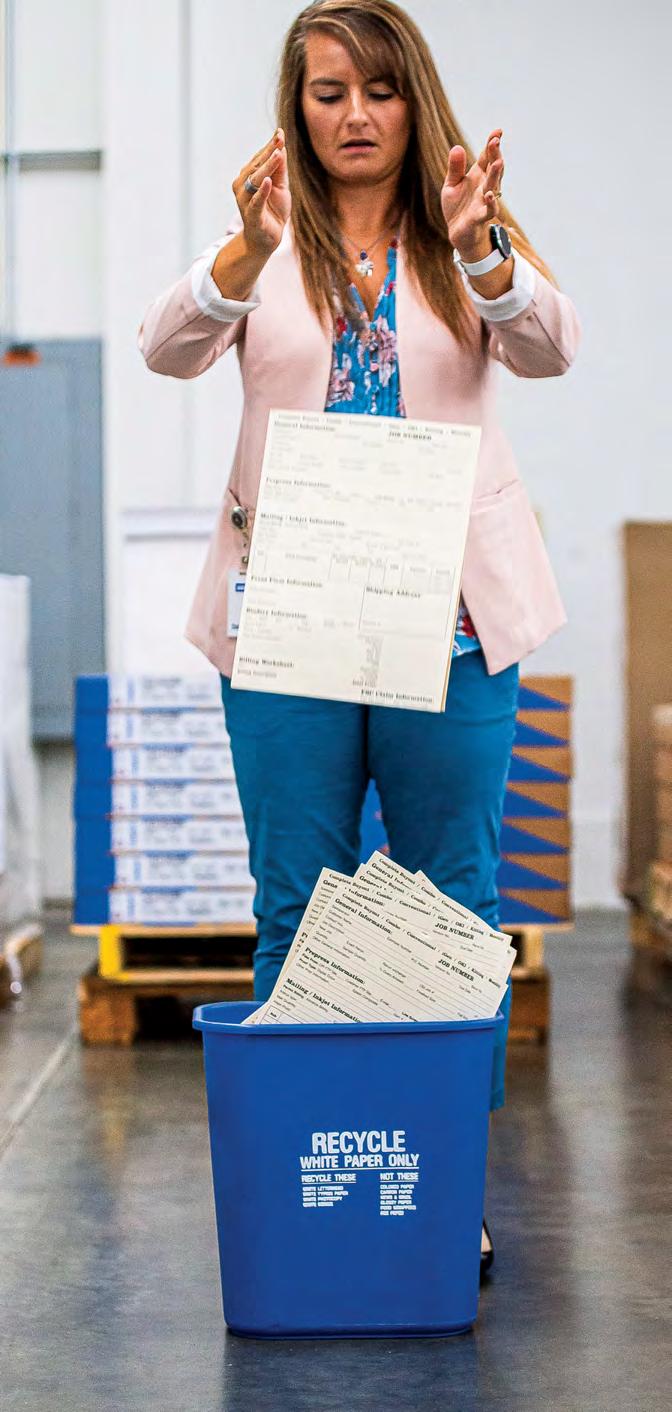


transitioning to other payment methods. This includes creative solutions like paying all of the expenses to a vendor with a single check at the end of the month or by using a purchasing card, similar to a credit card, which enables us to pay a balance in full each month.
Applying this concept has been successful in other areas as well. In operations, we asked, “How much can we save on our electric bill if we replace traditional light bulbs with LEDs?” Turns out, $15,000 per year. In shipping, we challenged our shipping department to reduce the use of outside courier dock trucks. They were able to go 15 months without using a dock truck, saving us $60,000. When you add up all of our accumulated savings, the number is huge.
We’ve been on this journey for four years. At the end of the day, the question is, “Has it worked? Is Daily Printing more successful than it was four years ago?” The answer to that is “absolutely.” By the end of the first three months of the fiscal year, we had tripled our net profitability. And our client base is expanding. In the last fiscal year, we opened 46 new accounts. This calendar year, we opened 39 accounts in the first four months alone, and they are large accounts with growth potential.

Many CEOs believe, “To be profitable, we just have to sell more.” That is not a philosophy I subscribe to. No matter what your sales are, you can be profitable. Then, as your sales grow, your profitability grows exponentially.
This is why I don't focus on revenue goals alone. I focus on profitability goals. You can be a $25 million printer and not make any money. Or you can be a $10 million printer with 5-percent profitability. Five percent of $10 million is half a million dollars. In the choice between breakeven and half a million dollars, I’ll take the $500,000.
Tom Moe is president and CEO at Daily Printing. He has been told that he needs to take “print” out of the company name, or the company will be pigeonholed and die on the vine. His response? “My philosophy is, that’s a great strategy if you’re a crappy printer.” Connect via moe@leadingprint.org.
There is some oft-overlooked data in the graphic communications industry: non-employer statistics, or freelancers. We often associate freelancers with areas like graphic design or commercial photography, but “freelance publishers” are a not-inconsiderable industry cohort.
According to PrintStats, there were 5,584 magazine publishing establishments in 2016. In that same period, there were an estimated 17,627 “freelance” magazine publishing establishments — sole practitioners or self-publishers
running periodicals from a home office, relying on cloud computing and freelance contributors. And while the word “magazine” doesn’t always imply a print publication, the fact is that a number of small/self-publishers are seeing success with targeted, hyper-local print magazines.
We may in fact be entering, if not a “golden” age, then at least a silver or bronze age of micro publishing. There are opportunities for print businesses to serve these growing, largely untapped markets.
Total U.S. Largest Region*
• In 2016, there were a total of 90,640 employees in periodical publishing companies, down -13.9% from 2015 to 2016.
• The declines in employment have been more modest at the small end (-4.7% among 1- to 9-employee publishers), but more pronounced at the large end (-18.4% among 50+-employee publishers).
• The Mid-Eastern region (DE, DC, MD, NJ, NY, PA, WV) accounts for more than one-third (34.5%) of U.S. magazine publishing employees.
Number of Employees (2010-2016)
5,584 Establishments NYC/Newark 94% Total U.S. Largest Metro (MSA) 1 - 49 Employees
• Among periodical publishers, 72% have fewer than 10 employees; 94% have fewer than 50 employees.
• From 2014 to 2016, periodical publishing establishments declined by -8%, and the declines were fairly consistent across all establishment sizes.
• In 2016, there were an estimated 17,627 non-employer periodical publishing establishments — basically, sole practitioners or self-publishers.
Number of Establishments (2016)
PrintStats is a business demographic resource developed by industry experts Dr. Joe Webb, Richard Romano, and economic consulting firm ExpliStats. Launched in 2017, PrintStats provides industry professionals and suppliers with actionable data they can use to estimate market size, identify geographic opportunities, and develop sales plans. The baseline data is derived from the U.S. Census Bureau's 2016 County Business Patterns data series, released in April 2018. PrintStats enhances this data with research and statistical analysis to include industry estimates and forecasts.
• In 2016, periodical publishers reported revenues of $27.9 BN. Large publishers accounted for 71% of revenues, even though they account for only 6% of establishments.
• Publishers in the Mid-Eastern region accounted for 37.6% of revenues; publishers in the South Western states (AZ, CA, HI, OR, WA) accounted for only 2% of periodical publisher revenues.
• Non-employer establishments reported an estimated $411 MM in revenues in 2016, a decline of -20.1% from 2015.
PrintStats is available to APTech members at tinyurl.com/aptechprintstats. A sample report covering the U.S. graphic design industry is publicly available at tinyurl.com/printstatsgraphicdesign.
For more information, contact Ken Garner, kgarner@aptech.org.
• In 2016, periodical publishers spent $201 MM on capital expenditures.
• Of these capital expenditures, 71% were by large (50+-employee) publishers, 21% by mid-size publishers, and 8% by small publishers.

By Zora Agheli
Ihave always been fascinated by the limitless possibilities when you really know the capabilities of the technology you are using. That has been a driving force for me — to know what’s coming down the pike for evolving software and hardware and to invest in the tools that will make our products better. Over the last 30 years, just about everything having to do with the print industry has changed, and I’ve made it my business to change with it.

I think of my business, Rush Graphics, not as a print shop, per se, but as an art studio. We’re a high-quality, low-volume studio known for our meticulous work with color. We print everything from advertising materials to packaging, but our niche is creating packaging mockups for which color is critical. We’ve have had some of our customers, like Godiva Chocolatier and the New York Giants, for more than 20 years. Among our other wellknown clients are Pantone; The Metropolitan Museum of Art; Becton, Dickinson and Company; Flipz; and Japan Tobacco International — a wide spectrum of companies united in their need for topnotch, accurate reproduction. They trust us to deliver fail-proof prototypes that they can turn around and use for very long, very expensive (read: high risk) print runs.
I believe our success stems from our expertise. As the founder and leader of the company, I’ve put great emphasis on the importance of being experts at the foundational components that go into advertising and packaging printing — color, photography, design, and layout.
I came to print with that kind of background myself. After earning a bachelor’s degree in photog-
Barrie House Coffee, a New York-based coffee roaster, needed packaging prototypes for a new line of Martha Stewart coffee and espresso products. The SKUs included folding cartons of various sizes and flexible coffee pouches. Our goal was to keep the look and feel of all packaging consistent, regardless of the substrate. We developed unique print-color values for each substrate to ensure color consistency and treated the materials with varying levels of soft-touch coating to achieve a similar feel.
raphy and design, and a master’s in communications arts, I worked as a photographer and designer in a full-service shop in New Jersey. We specialized in photography and design, prepress, and printing.
That’s where I learned to appreciate what technology can do to either detract from or improve a visual product. The shop had a Crossfield laser scanner — the first fully digital drum scanner. I remember my boss taking my photographs, laser scanning them, and giving them back to me with a color key that looked nothing like my original. I knew I could do a better job myself. I became an expert on the color scanner so I could have total control over my work and how it would print. I enjoyed playing around with the color to get precisely the hues I wanted. The process fascinated me, and the results were amazing. I was hooked.
In 1984, I opened Rush Graphics in Passaic, N.J. with $20,000 of personal savings. I set up a few dark rooms and purchased a Royal Zenith drum scanner, a horizontal graphic arts camera system, and a few vacuum exposure units. We were the only small company in the New York area that had a digital color scanner. I hired two professional film strippers, who worked with me part time in the evenings, and had a rotation of full-time interns. We had a total of just four clients — a couple of ad agencies, a print shop, and a publishing company. But we made a name for ourselves as a high-end prepress and color separation shop. Within three years, we grew to more than 100 accounts, 10 full-time employees, and $500,000 in annual sales.
And here’s what I noticed: Our competitors, many of whom were much bigger prepress shops, were run by people who were technicians more so than artists. My art background allowed me and my team to use the same tools but differently. I viewed a scanner as if it were a camera, for example.
Godiva Chocolatier partnered with Rush Graphics to create sales packaging samples for their Pure Collection, an assortment of dark chocolate bars. Godiva wanted help exploring print color options. We developed a background color intended to be the same across every flavor. The challenge was to keep the color consistent; the ink percentages were so low that any variance would be noticeable. Our team leveraged technology to ensure there was no fluctuation.
By using different filters, I could color correct and change colors while scanning, so there was often no need for reshooting, which was a common step in larger shops.
Our expertise enabled us to insert ourselves into the creative process. We could not only achieve a client’s desired look but also bring suggestions to the table. Printing is a high-touch field, and I called on my technical expertise and art knowledge to perfect the work. If a designer wanted to print a rose-colored package in four colors and stamp it so a spot would pop, we could recommend that they instead use two Pantone colors, which reduced the printing cost by half. Then we might suggest printing the piece on a foil, for instance, which would have the same effect as a stamp. In the end, they would get their job for a fraction of the cost, and it would look better when produced on a large scale. We saved so much time and money for our clients that new ones began to seek us out.

whom is still with me). In 1990, when pretty much all prepress work was becoming digital, I bought two Macs for the lead stripper and his team of five. I told them to go ahead and continue doing the stripping on the table, but that they also had to do it on the Mac. They never went back to the table.
From the beginning of my career, I have always been on the lookout for any new technologies that will yield a better product.
As soon as my equipment had a new digital version available, I would invest in it. I bought my first fully digital Dainippon drum scanner in 1987, when I was 31. At about the same time, I bought my first Apple Macintosh to support the traditional camera and darkroom, although it really wasn’t the standard technology until the early 1990s.
I have always pushed my staff to learn about technology along with me. I mentioned the film strippers I hired when I first opened my shop (one of
The Mac gave us a tool to do our work much easier, quicker, and more accurately. It used to be, for example, that if a client wanted to change the color of a headline, it would take three hours. You would choose a new color, strip it into clear film with different angles and screen values, compose it to negatives, and finally make a proof from negative. Only then you would see the exact color; at that point, if you made a little mistake or the color didn’t look right, you had to go back to the table. I stayed late so many nights to make simple changes. I hated the tedious, unforgiving nature of that manual process. With the computer, you could just click the color bar and change the color. Simple. And simply miraculous.
In 1992, I installed Adobe Photoshop and Illustrator on-site so we could have more control over the photos we were taking for our clients. We had a lot of ad agency clients back then, and the prepress


work was time-sensitive and time-consuming. Clients had print deadlines, which meant we had delivery deadlines. We needed the efficiency Photoshop provided. Technology, once we learn it, has always saved us time and money.
By the end of 1990s, I had 15 people working for me (as I do today) and sales of over $2 million per year. I had a full design room and photo studio. Half of my prepress work was done in the traditional way, but everything else was digital — with Adobe Illustrator, Photoshop, and QuarkXPress.
Between 2008 and 2014, I reinvested in the company and in more digital equipment. Our first digital press was an HP Indigo S2000. We upgraded from that to two HP Indigo 5500s. We were one of the first printers in the U.S. to run white ink digitally, and we did it on this press. We were also one of the only shops to utilize light cyan and light magenta at all times on this press for a wider color gamut. In 2014, we upgraded to the Indigo 7800, which we have now (with 7900 software). We were the first printer on the East Coast to install this press. We also purchased a digital die-cutter and HP flatbed printer during this time. These investments enabled us to go completely digital (except in finishing), and the return was dramatic; the equipment started to pay for itself after the second month in operation. Each time we invested in equipment, we increased our capabilities and took on more work. As a result,
our costs went down and our quality improved. We passed the savings on to our clients and have continued to keep our prices competitive. Today, our annual sales have reached $4 million.
Our clients range from packaging designers and design teams to marketing executives. We try to operate as an extension of their teams, helping to bring their ideas to fruition. A brand designer often creates the concepts for packaging, and we rework files to make their vision attainable in high-run production. When creating packaging mock-ups and prototypes, we produce different color swatches to ensure accurate results. Our presses are calibrated to the same degree as those used in high-volume production, so we’re able to save our clients stress. When they see products created by us, they know exactly what the final product will look like before they invest tens of thousands of dollars in printing. We prep and finalize files and then work with production printers to make sure there are no surprises.
Because some of our clients print overseas, we developed a system about 15 years ago that accounts for the different CMYK standards often used in Europe and Canada. It’s a tiny color difference, but if you use U.S. standard process ink for separation, the end product will look different when printed with their ink, so I’ll use European ink colors in our digital HP press for proofs. These are the kinds of steps we take to ensure that our attention to detail and color will translate to the final end product.
I am always looking for new equipment and keeping my eyes peeled for new technology. That’s how I’ve continued to grow this company, which has doubled in sales over the past 20 years. It’s very important in this industry

because packaging trends change every few years. If you can’t do what’s next on the horizon, you’re never going to stay in business. We stay relevant and market ourselves for the time we are in. Right now, we’re on the lookout for digital finishing equipment. While the technology is not quite “there” yet, we have been keeping a close eye on its evolution. For instance, we just invested in a Trotec laser cutter that can laser engrave on pint glasses and plaques. It also offers intricate cutting on acrylic, glass, wood, and paper — all with a short turnaround time because it’s digital. To me, it was a low-risk investment because it’s not very expensive and is easy to learn. We recently used it to cut the New York Giants logo into an acrylic sign.
We’ve had a Zund digital-die cutter for about 10 years. Together with the Trotec, which can cut smaller, more intricate patterns, we can offer our clients another layer of packaging production. When you have these types of machines, you can offer a variety of solutions and ideas. We’re here not only to be told what the customer wants, but also to proactively offer suggestions. Designers can test out their ideas or ours, and many times, our suggestion ends up in production.
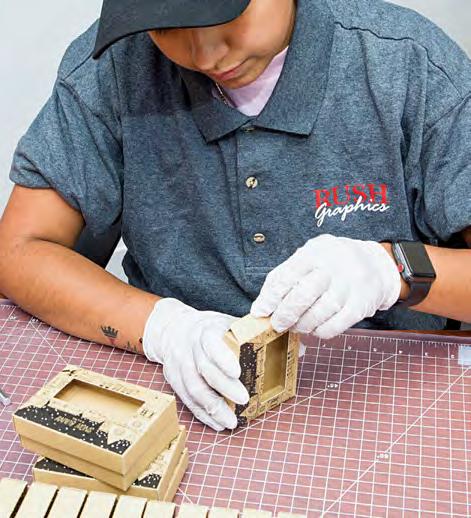

Like everyone else, we do a lot of research before we invest in new equipment. We go to print shows, participate in demos, read articles, and watch videos so that when we see a new technology that will be useful to our customers, we can act quickly. For instance, one of my employees went to a print show in Chicago last spring and saw an Epson SureColor roll printer and excitedly reported back to us from the show floor. We set up a demo for later that very day. By the time he got back to the shop, we had ordered it. Now we have a printer that can print on all kinds of materials, with better color quality results than a flatbed printer.
Our next big investment will likely be a 3D printer to prototype packaging. With it, we could make a prototype of a piece of jewelry, for instance, photograph it, and use it in an ad. We’ve been doing a lot of
research over the last few years and are waiting for the technology to get to where we want it to be. I want to be the first one to have this kind of printer in my shop, once the quality and price are right. Imagine how much we could play?
So today, after being in business now for almost 35 years, I still find myself waiting for the technology to catch up with me.
Zora Agheli is the owner and CEO at Rush Graphics in Hawthorne, New Jersey. She came into the business as a photographer and videographer and started her own company offering prepress and color separation work. Rush Graphics specializes in creating comps for packaging, and its clients include brands such as Godiva Chocolatier and the New York Giants. Connect via agheli@leadingprint.org.
Join a new community of creative thinkers.
Brush Strokes, a podcast produced by CANVAS magazine, brings stories from passionate print industry leaders to life. In this episode, host Mark Potter, publisher of CANVAS and CEO of Conduit Inc., talks with Thayer Long, president of the Association for PRINT Technologies, about framing the future of the industry differently. Here is an excerpt of their conversation, edited for clarity.
MP: What’s is the thing that, when you get up every day, you think yourself, this is the challenge in our industry?
TL: Developing a new way of thinking, a new attitude, a new paradigm. There’s so much enthusiasm and passion for this industry, but a lot of it is, I believe, misdirected. Well intended, but misdirected.
MP: How so?
TL: Because everyone still wants to talk about what we used to do, or worse, how what we used to do still has relevancy in today’s market.
I just was reading a story about Nordstrom. They discontinued their use of direct mail, and that didn’t work out well for them. I’ve seen all these industr y thinkers latch on to this and say, “See? Look, print isn’t dead, and catalogs are coming back.”
And my response is, not really. Sure, there’s a little gossamer they’re pulling out of this story, and it makes us all feel good. But how long is that really going to last? There was nothing in that story that said Nordstrom is going to double their investment in print.
It’s a feel-good narrative, but I don’t think it’s sustainable going forward. Because, ultimately, the forms of print
as we know and have defined them are shrinking. The only way printers are going to grow is by developing new print that hasn’t yet existed. Not by thinking, the only way I can grow is by taking something my competitor has. That’s a zero-sum game.
MP: I was reading a book by Bernadette Jiwa in which she talks about there being a competition-based approach, where a company is focused on winning. It’s very productoriented and all about beating the competition. And the other approach is being story-based. It’s more about defining your company by the people you serve. Creating your story means you’re listening to people, and your responses are relevant to them. This probably relates to what you’re saying?
TL: Exactly. When an industry defines itself by, “This is what we do, so how can what we do fit into what you need?,” there can be a mismatch. What you do may not be what your customer needs. It’s like saying, “I’m in the railroad business.” I’m going to be defined by being a railroader, versus being in the transportation business. People still need to get from

point A to point B, but the way they get there has evolved.
So if you focus on what your customers need, versus what you can do, it’s going to force you to evolve. It’s hard to do. You have to continually adapt. You have to find your relevancy.
MP: It’s almost cathartic to be able to say: Stop focusing on winning the same game everybody else is playing and go listen to people.
TL: It’s liberating. We’re learning about it here at APTech, too. We’re an 86-yearold association that has had essentially the same kind of product offerings for the past 86 years. And we’re in the process now of divesting ourselves of some of those offerings because we’ve lost our focus in terms of what the market needs and what our customers need. It’s liberating, because it gets us to think differently.
In terms of the print industry, we constantly push a narrative that buying a new piece of equipment will magically generate business for printers. It’s a seductive narrative, an attractive proposition to say, if I’m able to buy this one piece of equipment or if I’m able to incorporate this new vertical into my business, my problems are going to be solved. Easy peasy.
That’s not a real solution. The question is, how do you not allow yourself to become a commodity? It takes becoming valuable to your customers. In fact, you want to be so valuable that you know more about what they can achieve than they perhaps do. If you’re able to do this, you become truly indispensable.
MP: And it takes letting go of past breadwinners, which could be products or people.
TL: And let’s talk about that letting go. Let’s just acknowledge there are some forms of print that will disappear. Some have a limited lifespan and won’t be here in five or 10 years. You have to let them go.
But then you need to figure out what will replace them. Print itself is not going away, although some forms of it may go away or carry less impact in our world. I think you have to acknowledge that.
It’s about asking, how are you serving your customer? Are you saying, “I’m serving my customer by producing a high quality product for them.” Or, are you saying, “Through my product or service, I’m making my customer money.” Which is more valuable?
MP: Let’s step back and talk about APTech because you’re living this. You aren’t just sitting here in some ivory tower pontificating.
TL: Yes, we are. This association was started in the depths of the Great Depression, when the outlook for the print industry wasn’t good. Those are our roots. And you can juxtapose that with
what we’re facing today.
We started out as an organization solely for U.S. manufacturers of printing machinery. Over the years, we evolved, adding in new types of members, people who were more on the graphic arts supply side of the industry. And we developed a whole host of different programs to serve that OEM community, including advocacy, government affairs work, standards development, and research. Today we’re in a position to really ask how we can best serve the industry. We made some decisions last year to broaden our scope and say the industry is bigger than just the manufacturers. We need to be hearing from customers, so we’ve gotten printers much more involved in our organization. And in that process, we have stumbled upon this awareness that the industry can be divided, just like in any industry, into what you might call the survivalists and the progressives, or the innovators.
There’s nothing wrong with being a survivalist, but that’s not the community we want to serve. Because the survivalist mentality is not a futuristic mentality. We believe very much in the vitality of print as in the industry writ large. We believe that the future lies with the innovators and the people who are looking to serve their customers in a different way than they have in the past. There’s a community there that we feel is not being served, and we’re going to serve it.
What motivates me is that I still believe passionately in a tactile, print experience. Part of what makes us human is the fact that we have the ability to touch and experience things and communicate in ways other species can’t. Print has always been an integral part of that. There’s a
future for print, a brave new world. We believe we can serve that community in a meaningful way.
MP: What do you think that will look like?
TL: We see a great need for creative thinking around print and the development of print that hasn’t existed before. Right now, we have surrendered new product innovation to people who are unfamiliar with our industry. If you were to walk into a creative or marketing agency, they don’t have experience with or knowledge of print anymore. Or if they do, it’s limited.
So who’s really going to be responsible for coming up with print that hasn’t existed before? It has to be us. Why wouldn’t it be us? We’re the brilliant minds behind developing the technology that can do amazing things. You have printers out there who are truly creative. They’re not just manufacturers.
Let’s bring creativity back into the industry. We know there’s a community of innovators out there. So we’re focused on bringing the creators of print together to forge the future of print. We have to begin by incubating these communities of different people.
We’ll do our part. We’ll be that champion. We’ll be the outlaw that tells the industry what it doesn’t necessarily want to hear, but needs to hear. That’s our mission.
To hear this and other episodes of Brush Strokes, visit thecanvasmag.com/podcast


By Rick Sands

Photos by Brian Malloy
For those of you lucky enough to have seen a Grateful Dead concert, especially several times, you know that no two nights were ever the same. This was in part because the band’s song catalog was extensive, but more so because they never performed any one song the same way twice. They explored and improvised.
What does this have to do with print? For Fenway Group, ink and paper are the songs, and our presses, the instruments. How we bring them together is our virtuosity. Every day it seems, we take those basic ingredients and create new, innovative work, applying our skills and understanding of our customers’ needs to make each project we produce fresh and different. Every strategy we execute is different from the one before. I’ve been doing this for nearly 25 years now, and the approach has been working for us. We’ve been growing organically by eight to 20 percent per year since 2008 (yes, even through the recession).
As you’ve probably guessed, I’m a “Deadhead.” Since my late teens, I’ve embraced this music and been to my share of live shows. Although I’ve traded my tie-dye T-Shirt for a more buttoned-down look, I’m able to look back and derive lessons from my experience. I know that every entrepreneur has a unique story, and I would never have predicted my own. I’m a printer who never envisioned himself to be a printer. I’m also a printer who for over 10 years hasn’t really sold printing services. My philosophy has always been, “The less we sell print, the more print we sell.”
I came into the printing industry by accident. In the early 1990s, I did a short stint at an advertising agency, where I was exposed to Aldus PageMaker and an Apple computer. I was intrigued by the technology, so I taught myself how to use the software and trained to be a graphic designer. Since most of the design jobs I secured led to print, I met and interfaced with many printers.
I soon came to realize I was dealing with an industry undergoing huge change due to these evolving technologies. Many printers I worked with were old-school, with very traditional equipment. Any one vendor needed many supporting and partnering companies to get anything done. Meanwhile, the technology of the 90s was starting to break ground for a more integrated approach. For example, I could create a print-ready page with my scanner and PageMaker, effectively circumventing conventional,

mechanical preparation and stripping tables, cutting time down dramatically. With these kinds of technology applications, I knew I could reshape the prepress portion of production.
In 1996, I set up shop as Sands Creative Group in Cambridge, Massachusetts. My goal was to provide my clients with as many services as possible related to their marketing communications collateral. We wanted to be more production-oriented than a classic design agency, more versatile than a commercial printer. I invested in early generation scanners, imagesetters, and large format inkjet printers. We did design and composition for printers’ clients, ultimately providing film output to printers for making plates. I could see that the technology we selected had already helped our little company integrate services that previously needed to be done separately by photo labs, design agencies, and service bureaus.
In 1997, I met Todd Nugent, who worked for a printer from whom we were buying digital color printing. Todd grew up in print, but unlike many printers, he embraced the impact digital printing was having on the industry. Typical of the shifting trends and times, his company was purchased, and
“This
meant teaching the Fenway band a few new songs. Our designers started learning html, designing for web and email, and tying that design back to printed pieces.
”
Todd was dissatisfied with his future prospects, so we joined forces.
In 1999, we scraped together enough money to buy out a small copy center/quick printer shop in Brookline, Massachusetts. That shop was doing only about $300,000 in sales when we bought it, but we wanted to do our own printing instead of only designing for it. We kept the design business separate from the print shop for several years; sister companies related by ownership. At that time, our shop was in the shadows of the iconic home of the Boston Red Sox’s Fenway Park. In 2006, we moved the two companies in together to form Fenway Group. But what were we? A printer that does design? Designers who do print? Something else??
When asked why a Grateful Dead live show sounded so different from their studio recordings, the Dead would often answer: “The X factor.” They believed the audience connecting to their music and the subsequent, combined impact of musician and audience created the magic that resonated with their fans. At Fenway Group, we’re driven by achieving and maintaining our own X factor — using creativity combined with critical thinking and careful listening skills to meet our customers’ unique needs. We think carefully about what we can do and how we can constantly exceed customer expectations. We want our customers to be inspired by our work. As the internet materialized in the 1990s, we saw everyone trying to figure out how it would impact them. We certainly asked, will this internet thing kill our business? Enhance our business? One thing was certain: It was going to change us irrevocably. And I knew that if we didn’t embrace the changes, we would become dinosaurs. This meant listening to our clients articulate their new internet-inspired challenges, observing what they were attempting to do, and finding technologies that would enable
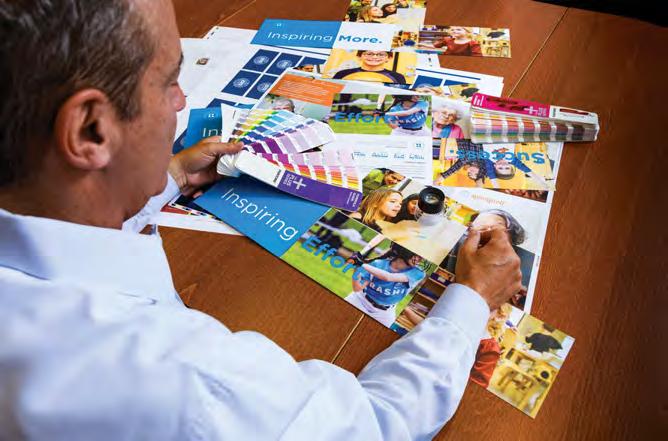

a solution. We became intent on bringing technology to bear as a solution to their specific problems, not as a solution looking for a problem (which is, I believe, more typical in our industry). We believed in what we call “enabling technology” — technology that helps businesses realize a goal or objective.
Twenty years ago, for example, we had a number of clients who needed quick turnaround. They had time-sensitive material that needed to be delivered in a specific window or it was rendered useless. Internet connectivity wasn’t a thing yet. In this early digital age, the speediest way to get the client’s file was via modem. So we bought and installed modems. That was our X factor, finding a solution to a client’s communications problem. And that was the breakthrough moment in my thinking. We aren’t a printer that does design, nor a design firm that does print. We are a marketing communications services provider. Print is only a means, not an end. Only one spoke in our wheel.
As you know too well, 2008 brought a recession. Doom and gloom were the headlines of the day. Was this economic climate combined with evolving digital technologies the demise of print? What I saw was that print had become a commodity. And as a commodity, it was not a viable business model on its own. If we could add extra value to our print services, I believed we could turn challenges into success and not chase the downward spiral of becoming a low-cost provider.
Our reality through the recession was quite different than the headlines.
Acquiring new customers was difficult, but by looking carefully at a select group of business verticals among our existing clients, we added services and solutions that fit their new realities. We saw opportunity among education, healthcare, and nonprofit organizations. We doubled down on learning how to provide solutions for these clients. Once again, we looked to technology solutions to help our clients communicate better with their audiences — now, by using multiple channels.
This meant teaching the Fenway band a few new songs. Our designers started learning html, designing for web and email, and tying that design back to printed pieces. Our print team learned how to take data and integrate it into different platforms for personalized, cross-media communications. Both groups worked together to provide email marketing with variable data, tracking, and follow-up campaigns. This led us to multi-channel, integrated communications generated from mastering database technology. Our first such project was to design and produce marketing materials for the first Printing Industries of America Converge Conference in 2010. The theme of the conference was cross-media marketing, and our products and services reflected
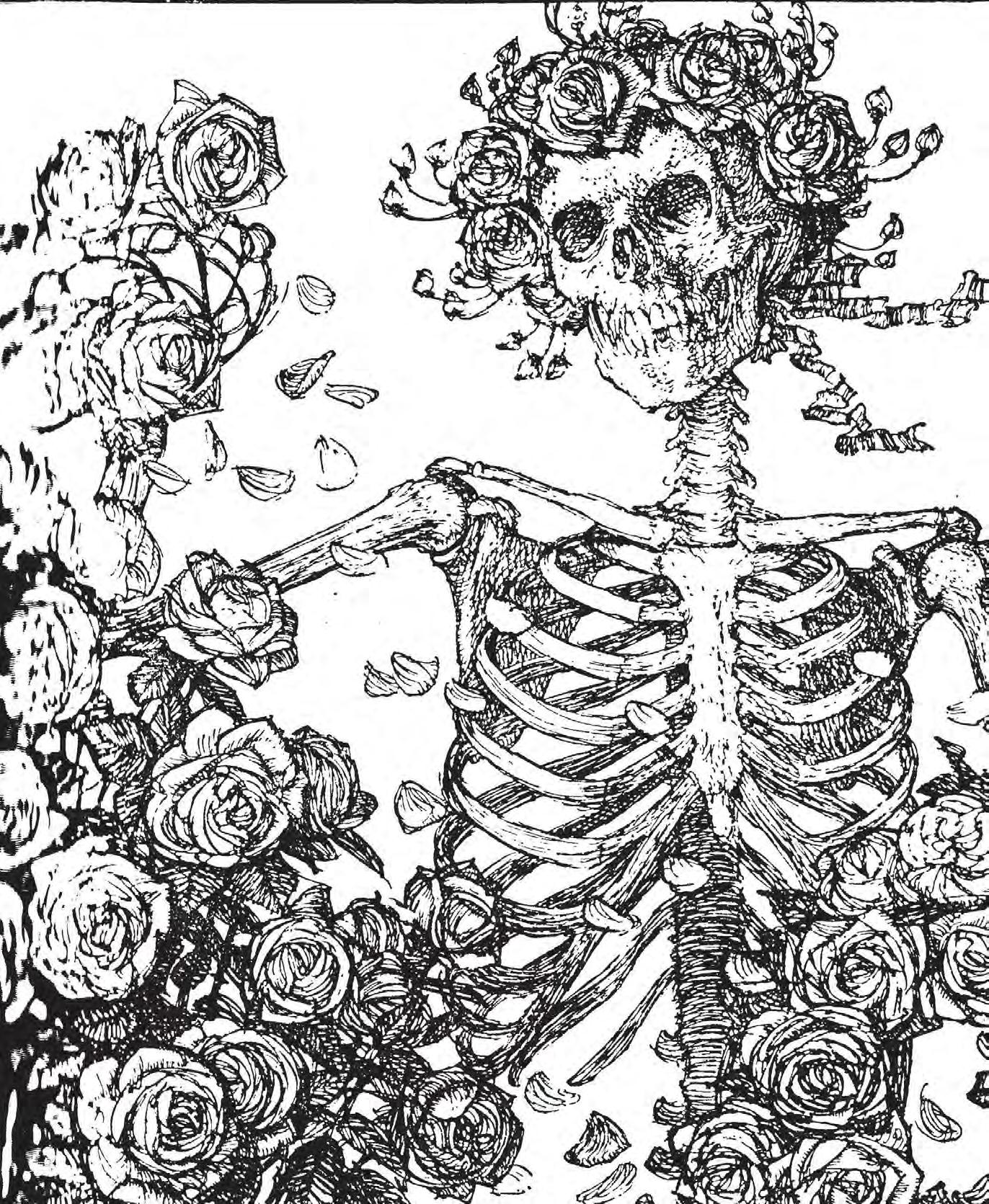


“Like the Dead, we don’t play a song the same way for every customer. We keep our approach fresh and innovative and that keeps our customers successful.”

sophisticated web-to-print software platform that enables our customers to create and order marketing collateral consistent with their branding needs. It was both painful and transformative. This automated path has led to increased capacity and a reduction in errors.
This healthcare client is a great example of the power of integration and workflow automation. In 2018, we processed nearly 6,000 orders for them. Of those, 4,000 orders were entered via our customer portal. This system automatically processes the orders with only four human touchpoints: Print, cut, box, and ship.
This impacted our business in a powerful way. By automating so many orders, our customer services team is able to focus on working with this client on their larger, more complicated, multi-channel projects. While 68 percent of these orders were automated and streamlined, the remaining 32 percent required more hand-holding. Here’s why that matters: The 32 percent of work that our team can help shape and shepherd accounts for 71.5 percent of the revenue from this customer. In effect, our team can be freed up from the less lucrative work, which can be automated, to focus on the more lucrative work, which needs more guidance and attention.
We have remained focused on our organic growth and each year have added revenue. From 2009 to 2017, we more than doubled our annual revenue and reinvested most of the profits in our people and new technology. We also recognized another opportunity for growth through acquisition. In
2018, we purchased a local, complimentary printing company. We are in the midst of assimilating their production and sales team. As they're mastering our listening techniques, we'e experiencing even more success.
The Grateful Dead’s fans, Deadheads, are infamously loyal followers. They stuck by the band because they loved the improvisational aspect of each concert and the interplay between band and audience. Like the Dead, we don’t play a song the same way for every customer. We keep our approach fresh and innovative and that keeps our customers engaged with us and successful in their marketing efforts. What a long, strange trip it’s been? Maybe so, but today I look back at that road with reverence and turn to the road ahead with fresh enthusiasm.
Rick Sands is president at Fenway Group, where he is responsible for identifying and developing new sources of growth. Although he doesn’t follow the band (today’s iteration) anymore, he still takes in a Dead & Company show when they come to the Boston area. Connect via sands@leadingprint.org.
We’ve been saying that there’s no better time to be a part of the print industry, and we truly believe it. We say this because new opportunities abound if you know how to create them and make them a part of your business.
This may be the last year of PRINT as you’ve come to know it, but it’s the beginning of Brand Print Americas – a collaboration between Tarsus and APTech that will unite the print community and expand the business potential for the entire value chain.
It’s not just the PRINT event that’s changing. There are a lot of other changes going on behind the curtain at APTech. We’ve become a different breed of association. We are focused solely on providing a forum to inspire the development of new valuable print products by fostering collaboration between those who imagine and those who create. We are the ambassadors for the future of print, and we’re aiming to help our members diversify their businesses through ideation.
So, what IS behind the curtain, you ask?
We’ve been rolling out several new initiatives from which you might already have benefited, including this magazine. For the past year, LeadingPRINT has provided a medium for printers to tell the honest truth about the ups and downs of running a print business. We plan to continue telling these stories because we’ve heard how much they have resonated with readers.
In July, we launched AP Tech Connect – an online community forum. Open to ALL indiv iduals who print or are associated with print, this is a place to connect and collaborate. Post a question and get an answer from those who have walked your same path or perhaps had the same challenges. Participate at community.printtechnologies.org.
Do you know about the LeadingPRINT Forum? These intimate, in-person events put you in the same room with the leaders who share their stories in the pages of this magazine. Ask them questions, have discussions, and build relationships. We’ll be expanding this program and delivering even more opportunities for executive, peer-topeer interaction.
With these new initiatives, we haven’t forgotten about those core programs, including standards, international, and research, that our members depend on. We’ve been evaluating what you have told us is working and what isn’t, so we’ve shortened the length of our studies to be more manageable; we’ve brought on staff to support Standards; and we are addressing our international programs in new ways.
So yes, this is a great time to be in the print industry and a great time to be a member of the A ssociation for PRINT Technologies. We’re continuing to develop new programs and new content to serve the industry. I invite you to participate in all that we have to offer and be part of the charge forward. Check out what we’re doing at PRINTtechnologies.org.
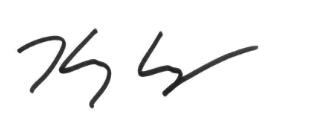
Thayer Long, President, APTech



The Association for PRINT Technologies (APTech) provides a forum to inspire the development of new and valuable print products. We educate, provide market research, and foster collaboration between those who create and those who imagine. We are the industry association entirely focused on the future of print. Our members are the creative minds who love to innovate and the leaders who stand ready to create the future. We exist to facilitate the evolution of physical experiences in our increasingly digital world. For complete information about APTech, its programs, and its member companies visit PRINTtechnologies.org or call 703/264-7200.
Death is certain. The "death tax" isn't.
By Mark J. Nuzzaco, Esq.
It’s said that two things in life are certain: death and taxes. But, the socalled “death tax” (estate tax) is far from certain. And that’s a concern for estates of all sizes, particularly family-owned enterprises organized as pass-through tax entities, which includes many printers and suppliers. Understanding the law in this area is critical to successfully transferring wealth from one generation to the next.
There are three factors to consider when assessing the impact of the death tax on an estate: 1.) the content of the estate, 2.) the amount of the estate exempt from taxation, and 3.) the rate of taxation imposed on the non-exempt portion.
Determining the content of an estate can be complex and requires an understanding of the relationship between estate and gift tax law. An important concept is that of “stepped-up basis,” which is a provision in the law that assigns fair market value to property transferred at death. This eliminates an heir’s capital gains tax liability on appreciation in the property’s value that occurred during the decedent’s lifetime. In contrast, property transferred before death receives “carryover basis,” which means the donor’s original cost basis is carried over to recipients, requiring them to pay capital gains taxes on appreciation in the property’s value that occurred during the donor’s lifetime if/when recipients sell the property. Depending on the circumstances, this difference in valuation can be decisive in how wealth is transferred.
Then, there is the estate tax exemption.
For many estates, this is the most salient feature of the tax since it exempts the large majority of estates. In 2019, estates valued at less than $11.4 million ($22.8 million for a married couple) are exempt from the 40-percent tax. This is the result of changes made by the Tax Cuts and Jobs Act (TCJA), enacted in 2017, which doubled the then-existing $5 million ($10 million for married couples) estate tax exemption and indexed it for inflation through the year 2025. But because the increased exemption is temporary and set to expire at the end of 2025, it will automatically revert to lower, pre-TCJA exemption levels in 2026. To avoid this reversal, opponents of the tax have introduced legislation to permanently repeal the estate tax, meaning it would not come back into effect unless a future Congress and president agree to reimpose it. Conversely, proponents of taxing inherited wealth have authored legislation to speed up the “sunsetting” of the increased exemption by three years, to the end of 2022. Given the current divided government in Washington, it’s unlikely that either of these efforts will succeed.
Lastly, there is the tax rate. Over the past twenty years, the marginal estate tax rate has fluctuated. It reached a high of 55 percent in 2001; was reduced to zero in 2010 when the tax was repealed for that year; was reinstated in 2011 at 35 percent; and in 2013 was increased to 40 percent, where it has remained. Currently, several Democratic presidential nomination contenders are proposing hefty estate tax rate increases if elected.
Repealing or retaining the estate (death) tax continues to be highly debated. Proponents of repeal argue that societal “fairness” and a need for more tax revenue support maintaining or increasing the estate tax. Opponents counter that the death tax is antithetical to property rights, slows economic growth, destroys jobs, and suppresses wages because it is a tax on capital and entrepreneurship. Regardless of which side of this debate you are on, it is wise to pay close attention to the oftenchanging rules.
This content is informational and not legal or accounting advice. Contact Mark J. Nuzzaco, Esq., mjnuzzaco@gmail.com.
• 2018 Year-End Estate Planning –tinyurl.com/2018YrEndEstatePlanning
• 2020 Candidates on the Death Tax – atr.org/2020-candidates-death-tax
• The Trade-Offs of Repealing Step-Up in Basis – taxfoundation.org/ step-up-in-basis
• U.S. Total Industrial Production during the 12 months through May was up 3.3% from one year ago. All three segments of the industrial economy are trending along the back side of the business cycle.
• U.S. Industrial Production is unlikely to rise much further during this business cycle. Plan for activity to decline later this year and into next year.
• The manufacturing sector was a source of growth potential in recent quarters, but it will be an area of weakness through the remainder of this year and into next year.
• As the macroeconomic business cycle trends downward, keep near-term costs low. However, the next macroeconomic rising trend is around the corner, expected to take hold by the middle of next year. Reevaluate your capital expenditure plans accordingly. Ensure you have enough cash to invest when the time comes.
• Leading indicators suggest that the U.S. Industrial Production year-over-year rateof-change will likely decline through the remainder of this year.
• The ITR Leading IndicatorTM resumed decline after rising in recent months. It is too early to determine if the March low will hold.
• The U.S. Total Capacity Utilization Rate ticked up in June, but more data is needed to determine if this is the start of a rising trend.
Manufacturing
• Total Manufacturing Production was up 2.1% in July, from a year ago.
• Production will likely decline during at least the majority of the second half of 2019.
• U.S. Metalworking Machinery and U.S. Construction Machinery are expected to be particular areas of weakness this year.
• Nondefense New Orders were up 4.2% in July, from a year ago.
• New Orders will peak imminently before declining into early 2020.
• Defense New Orders were up 16.7%.
• Retail Sales during the 12 months through May were up 4.0% from a year ago.
• The pace of growth for Retail Sales will slow into mid-2020.
• E-Commerce Retail Sales were up 13.3% and are in a slowing growth trend.
This data is excerpted from the APTech Advisor, a quarterly report produced in conjunction with the Institute for Trend Research (ITR). APTech offers a top-level report to all members and a detailed report to members participating in our market data program. Visit tinyurl.com/aptechadvisor.













